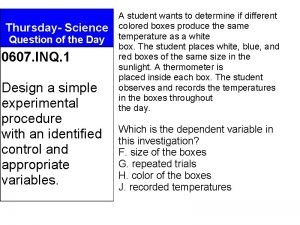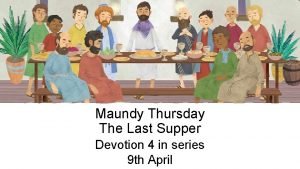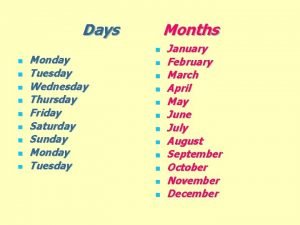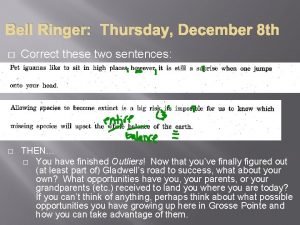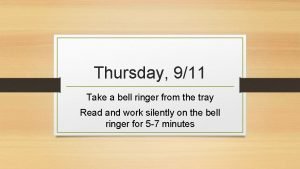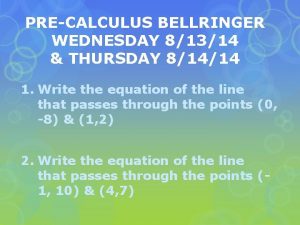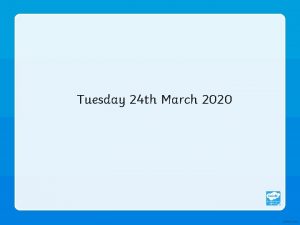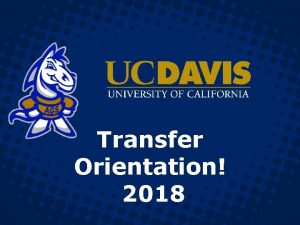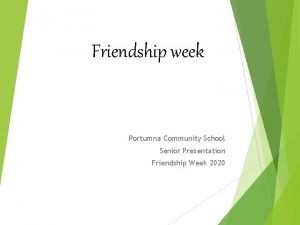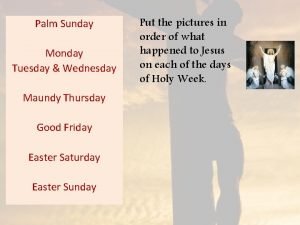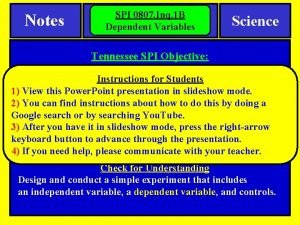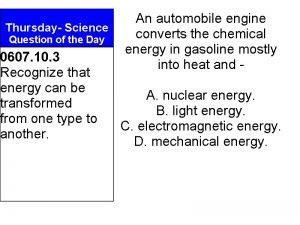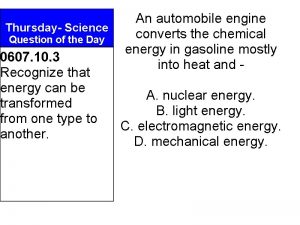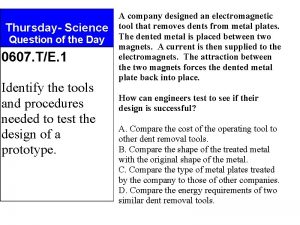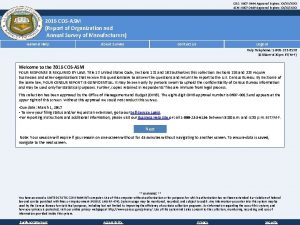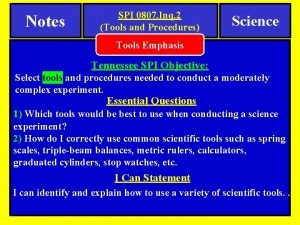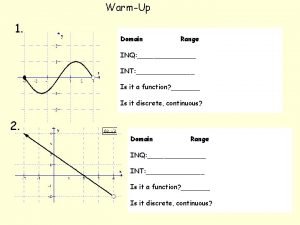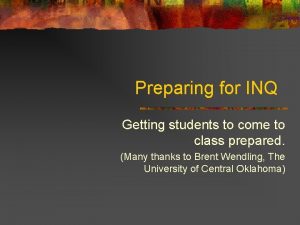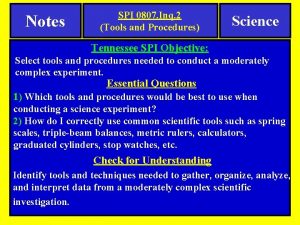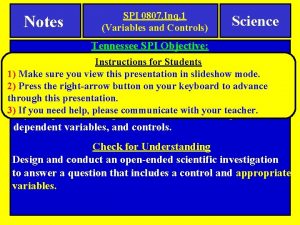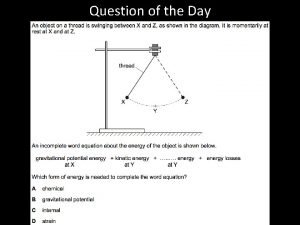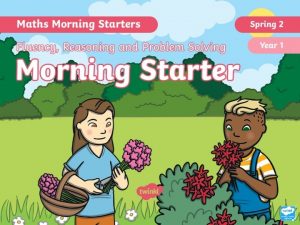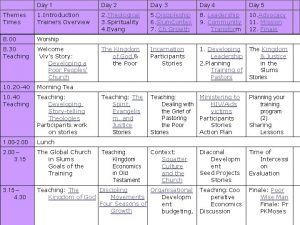Thursday Science Question of the Day 0607 INQ





































- Slides: 37

Thursday- Science Question of the Day 0607. INQ. 1 Design a simple experimental procedure with an identified control and appropriate variables. A student wants to determine if different colored boxes produce the same temperature as a white box. The student places white, blue, and red boxes of the same size in the sunlight. A thermometer is placed inside each box. The student observes and records the temperatures in the boxes throughout the day. Which is the dependent variable in this investigation? F. size of the boxes G. repeated trials H. color of the boxes J. recorded temperatures

th 6 Grade Science TCAP: Reviewing the Scientific Method! (reach back … this is from the beginning of the year!) Today’s Agenda: • Writing down the Question of the Day (5 minutes) • Going over the Question of the Day (5 minutes) • Reviewing the components of a good scientific investigation (10 minutes) • Looking at Examples as a Team (10 minutes) • (15 minutes)

Going over the Question of the Day A student wants to determine if different colored boxes produce the same temperature as a white box. The student places white, blue, and red boxes of the same size in the sunlight. A thermometer is placed inside each box. The student observes and records the temperatures in the boxes throughout the day. Which is the dependent variable in this investigation? F. size of the boxes G. repeated trials H. color of the boxes J. recorded temperatures Testing Tips: • When reading about a scientific experiment, read through the description of the experiment first. • Then read through the question – what component of a scientific investigation is the question asking you to identify? • In this question, we are being asked to identify the dependent variable. • Remember, the dependent variable depends on what I do. • What you are doing in this experiment is placing different colored boxes outside. • What depends on the color of the box is the temperature inside!

Reviewing the components of a good scientific investigation (10 minutes)

Scientists have to take the time to think logically when they are investigating a question or problem. • They break things down into many steps that make sense.

7 Steps to the Scientific Method • Most people agree that there are 5 to 8 main steps of the scientific method • In Ms. Mc. Guirk’s science class, we used the following 7 steps:

7 Steps of the Scientific Method • 1) Choose a problem/ question • 2) Research your problem/ make Write this observations about your problem down! • 3) Form a hypothesis • 4) Write your procedure • 4) Experiment to test the hypothesis • 5) Record results/data of experiment • 6) Communicate the conclusion

1) Choose a problem or question. • Choose something that can be answered with an experiment. • It should be something that interests us, or deals with our everyday lives!

Do PCA scholars prefer hot Cheetos or spicy Doritos?

OBSERVATION • An observation is the act of gathering information based on the five senses.

I see a lot of scholars eating hot Cheetos at lunch everyday. What is the sense I am using for my observation here?

2) Research your question • Sometimes, if our question is complex, we may need to gather more information by conducting some research. • We can conduct research by making observations. Examples: • Observe the world around you. • Ask other people for advice! • Look in books or use the internet to find more information!

3) Develop your hypothesis • A hypothesis is a possible answer to your question. • Some people call a hypothesis an educated guess.

After making my observations by asking scholars what kind of snack they liked and seeing what they ate at lunch, my hypothesis is that PCA scholars prefer hot Cheetos to spicy Doritos.

4) Write your procedure • List of all of the materials you will need. • List each thing you will do. • Number each step • in order. • Write down everything you will do.

My Procedure Materials • 20 PCA 6 th graders • 20 PCA 7 th graders • 40 cups of hot Cheetos (each cup the same size) • 40 cups of spicy Doritos (each cup the same size) • 40 cups of water Procedure (1) I will choose 20 PCA 6 th graders and 20 PCA 7 th graders at random (2) Each day for 5 days, I will test 4 6 th graders and lunch and 4 7 th graders until I test all 20. (3) Each scholar will be able to eat one cup of hot Cheetos & one cup of spicy Doritos (4) In between eating each cup, they will drink a cup of water (5) After they have eaten both cups, they will pick which one they enjoyed better.

5) Experiment to test the hypothesis! • Get your materials, follow your procedures, and make observations. • Write down your observations, this is called your data!

My Data: • 14 6 th graders preferred hot Cheetos • 6 6 th graders preferred spicy Doritos • 9 7 th graders preferred hot Cheetos • 11 7 th graders preferred spicy Doritos

6) Organize your data • Write down as much data as you can about what you see during your experiment. • Make tables, charts, or graphs using your data.

What do our PCA Scholars prefer: Hot Cheetos or Spicy Doritos?

7) State your conclusion • In the conclusion, scientists answer the question that the experiment asked. • Look at your data and decide what it tells you about your hypothesis. Summarize your data. • Communicate your results with others.

My Conclusion • Based on my results, 23 PCA scholars preferred hot Cheetos, while 17 PCA scholars preferred spicy Doritos. Therefore, it is my conclusion that PCA scholars prefer hot Cheetos to spicy Doritos. My hypothesis was correct!

Once a scientist completes an experiment, they often repeat it to see if they get the same findings and results. • This is really what we call verification, or checking things out to make sure everything was valid and will happen again and again.

Every Good Experiment Has Three Things! 1) Independent variables 2) Controls 3) Dependent variable

Think about this… • Let’s say that Brad has a pimple. He wonders what will get rid of it. He’s heard that putting toothpaste on the zit will get rid of it. He’s also heard that lemon juice will get rid of it. He decides to rub his face with lemon juice and toothpaste. The next morning his pimple is gone. But which thing cured him? The toothpaste or the lemon juice?

The Answer? • How many of you think it was the toothpaste? Raise your hand. • How many of you think it was the lemon juice? Raise your hand. • The truth is…. • THERE IS NO WAY FOR YOU TO KNOW FOR SURE BECAUSE THIS IS A BAD EXPERIMENT!!!

Definitions • Variable: anything in an experiment that can change • Independent variable: what you manipulate (change on purpose) in an experiment • Control(s): what you keep the same so it/they don’t interfere with your independent variable • Dependent variable: what happens in an experiment because of the independent variable

Remember our Sayings… • I CHANGE THE INDEPENDENT VARIABLE. Write this down! • THE DEPENDENT VARIABLE DEPENDS ON WHAT I CHANGE. • THE CONTROL STAYS THE SAME AND IS USED TO COMPARE.

Looking at Examples as a Team (10 minutes)

Learning Through An Example Larry was told that a certain muscle cream was the newest best thing on the market and claims to double a person’s muscle power when used as part of a muscle-building workout. Interested in this product, he buys the special muscle cream and recruits Patrick and Sponge. Bob to help him with an experiment. Larry develops a special marshmallow weight-lifting program for Patrick and Sponge. Bob. He meets with them once every day for a period of 2 weeks and keeps track of their results. Before

What is the dependent variable in this experiment? • Since Larry is looking to see if the cream has an effect on how much someone can lift, the dependent variable is THE NUMBER OF MARSHMALLOWS THAT CAN BE LIFTED by Spongebob and Patrick • The number of marshmallows each one can lift depends on the type of lotion they got (independent variable)

What are the Controls? In this experiment, there are several things that Larry kept the same: 1) He had Spongebob and Patrick do the same workout 2) He had both of them do the workout every single day for 2 weeks 3) He rubbed the lotions on their arms and back

Learning Through An Example Homer notices that his shower is covered in a strange green slime. His friend Barney tells him that coconut juice will get rid of the green slime. Homer decides to check this out by spraying half of the shower with coconut juice. He sprays the other half of the shower with water.

• What is the independent variable in this experiment? – Homer spraying two different liquids on his shower. • What is the dependent variable in this experiment? – The resulting change in slime residue. • What is the control? – The WATER that Homer sprayed (since it was liquid he used to compare)

Learning Through An Example • Smithers thinks that a special juice will increase the energy of workers. He creates two groups of 50 workers each and assigns each group the same task (in this case, they're supposed to staple a set of papers). Group A is given the special juice to drink while they work. Group B is not given the special juice.

• What is the independent variable in this experiment? – Smithers giving the different drinks to his workers • What is the dependent variable in this experiment? – The resulting levels of energy (the number of papers they staple). • What is the control? – The group that is not given the “special” juice.

NOW IT’S YOUR TURN (15 minutes) • On my Quia profile, open the “March Madness” Folder and click on “Week 4 Practice Quiz” • You will have the last portion of class to answer 10 practice questions on this topic. The secret word for today’s practice quiz is: “Variable” • Once you submit your answers, make sure you review the questions you got wrong!
 Wskaźnik inq wzór
Wskaźnik inq wzór Monday question of the day
Monday question of the day Day 1 day 2 day 3 day 4
Day 1 day 2 day 3 day 4 Level 3 costas questions
Level 3 costas questions Day 1 day 2 day 817
Day 1 day 2 day 817 Science question of the day
Science question of the day Favorite lesson in science
Favorite lesson in science Thoughtful thursday morning message
Thoughtful thursday morning message Monday tuesday wednesday thursday friday calendar
Monday tuesday wednesday thursday friday calendar St paul's church wibsey
St paul's church wibsey Holy thursday (songs of innocence)
Holy thursday (songs of innocence) Blessed holy thursday
Blessed holy thursday Last supper devotional
Last supper devotional Today is thursday. the weather is
Today is thursday. the weather is Terrific thursday gif
Terrific thursday gif Thursday bell ringers
Thursday bell ringers Monday after easter
Monday after easter Celebration of the resurrection of jesus
Celebration of the resurrection of jesus Monday tuesday wednesday thursday friday saturday sunday
Monday tuesday wednesday thursday friday saturday sunday Thursday bell ringers
Thursday bell ringers King forever
King forever Thursday prayer
Thursday prayer Thursday bell ringers
Thursday bell ringers Wednesday bellringer
Wednesday bellringer Welcome thursday
Welcome thursday Welcome thursday
Welcome thursday Adjectives for tuesday
Adjectives for tuesday Oeoes uc davis
Oeoes uc davis Thursday 420
Thursday 420 Dua imam zainul abideen
Dua imam zainul abideen Romeo and juliet day timeline
Romeo and juliet day timeline Monday inglês
Monday inglês Senior g friendship thursday
Senior g friendship thursday Welcome thursday
Welcome thursday Black sunday stock market crash
Black sunday stock market crash Thursday
Thursday Wednesday or thursday
Wednesday or thursday Thursday morning prayer
Thursday morning prayer





